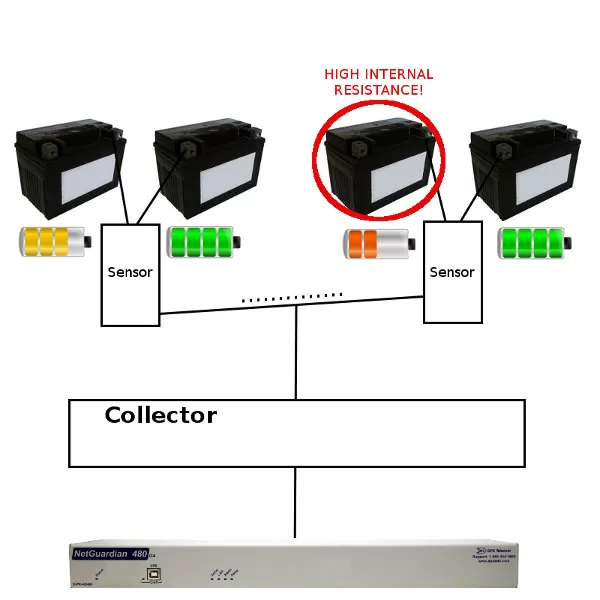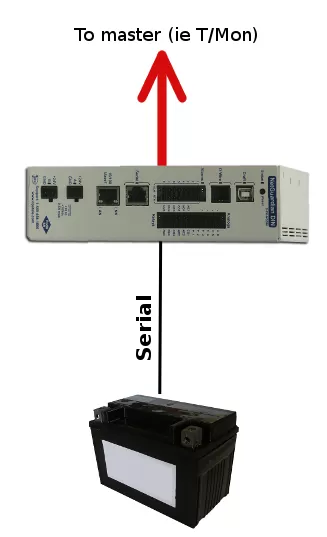Download our free Monitoring Fundamentals Tutorial.
An introduction to Monitoring Fundamentals strictly from the perspective of telecom network alarm management.
1-800-693-0351
Have a specific question? Ask our team of expert engineers and get a specific answer!
Sign up for the next DPS Factory Training!

Whether you're new to our equipment or you've used it for years, DPS factory training is the best way to get more from your monitoring.
Reserve Your Seat TodayYour batteries are typically "out of sight, out of mind", which is fine - until you need them. When commercial power fails, your batteries absolutely have to work. It's simply too risky to leave such a critical piece of your network unmonitored. You need to know that your network sites will stay online.
Monitoring the entire string is better than no monitoring at all - but it's not the most effective way to improve reliability. It only takes one bad cell to degrade the performance and lifespan of an entire array of batteries. String voltage doesn't tell you how many cells have degraded and to what extent.

For a typical battery system, it's best to have at least one sensor for every two batteries. Each sensor reports the health of one or two batteries, making it easy to spot possible trouble before its too late. The sensors send data to a collector which mediates the information and sends it to your RTU. If there is a problem, it's recognized by your RTU and you get an alarm.
This method involves a lot of parts, which means it can be fairly expensive and time-consuming to implement. That's fine for your traditional battery plants, but there's a better way if you choose newer "smart" batteries.
"Smart" batteries are now replacing traditional cells. These cells come equipped with internal sensors that allow for self-monitoring. With smart batteries, you no longer need extra equipment like sensors and collectors. Your batteries simply report to your RTU.

Don't have an RTU capable of receiving messages from your smart batteries? The NetGuardian DIN from DPS Telecom was built with this application in mind. This small RTU is capable of monitoring your smart batteries, as well as other devices such as environmental sensors.
At DPS, we receive many urgent quote requests after an earlier "Do Nothing" decision comes back to bite you. You have no reason not to be proactive (and maybe you'll manage to impress your boss).
Call us. Chat with an expert for 10 minutes. We'll email you a detailed quote with a custom application drawing. We'll even include a summary of business benefits you can use to justify your project budget.
Call 1-800-693-0351 now for your quote or send us a quick online message instead.